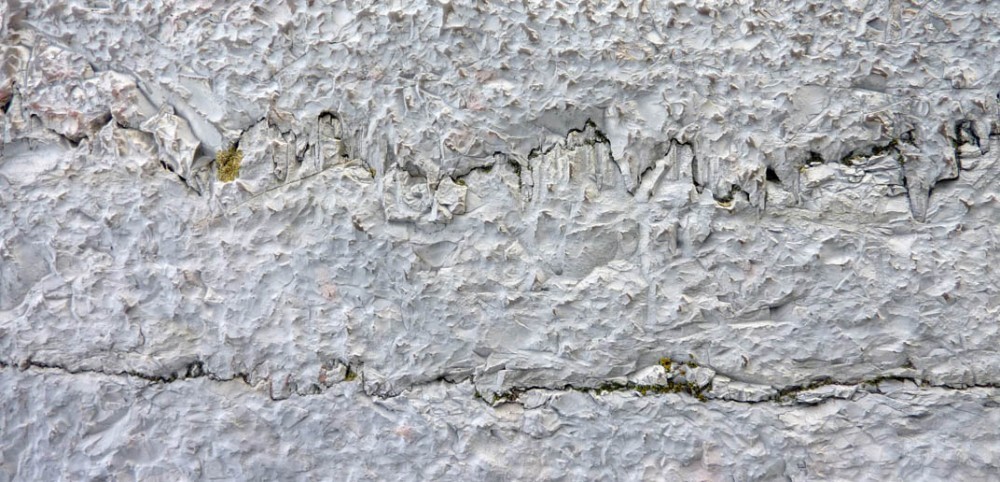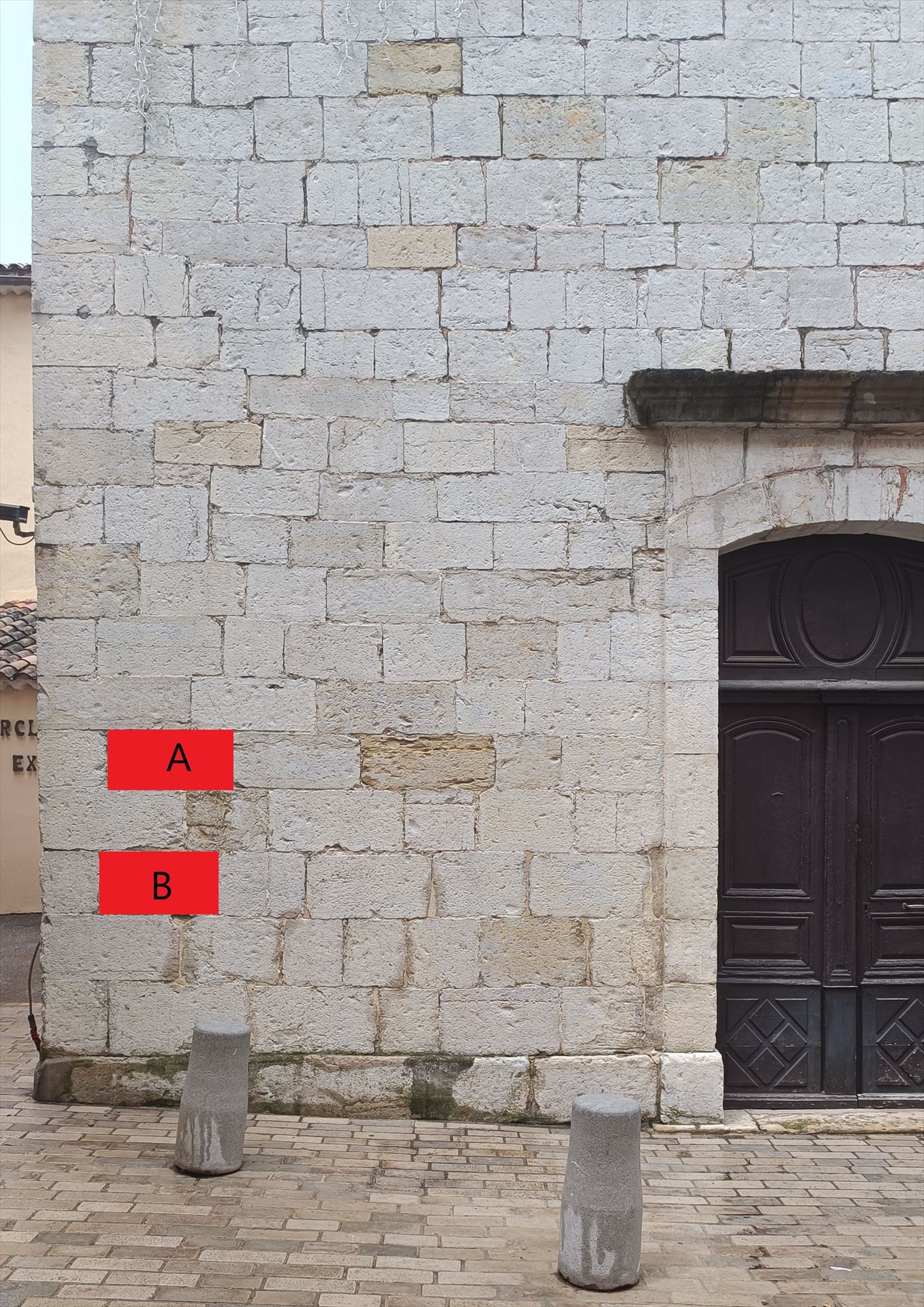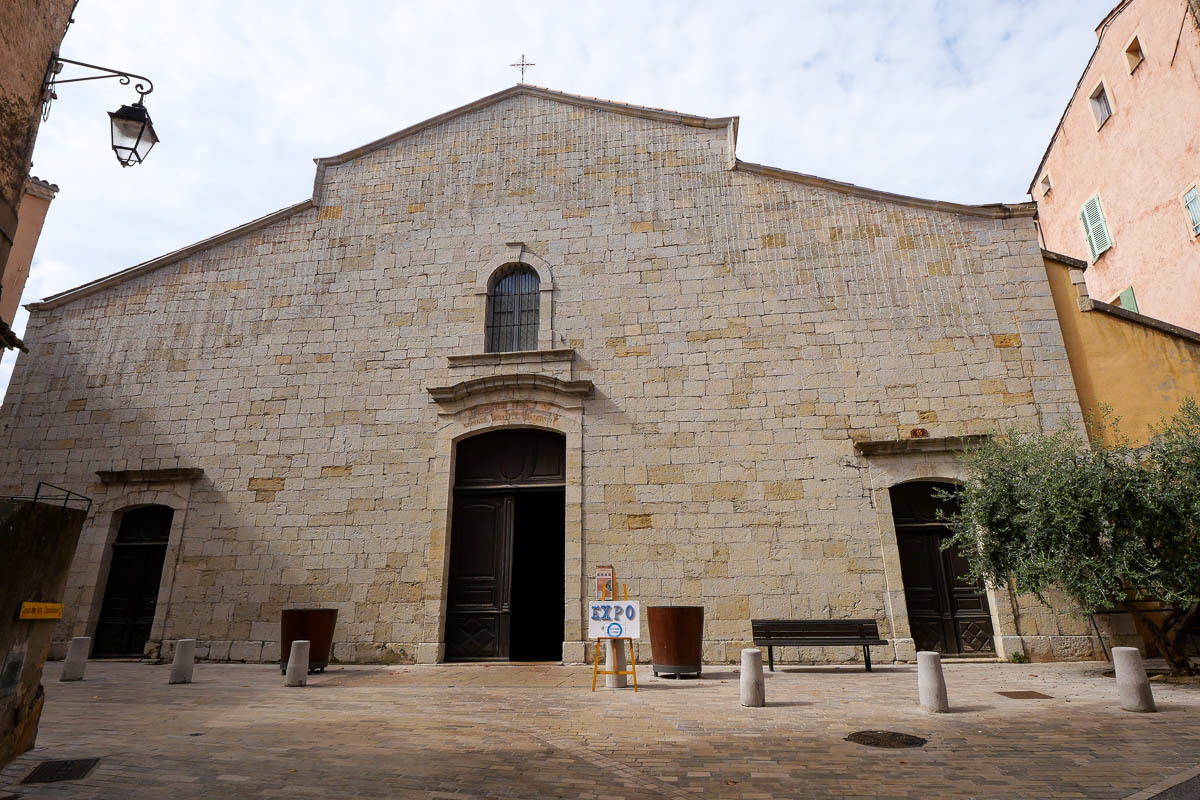
Des stylolithes à l'église St Pierre de Cotignac

Définition :
Les stylolithes ou stylolites (du grec stylos (« pilier ») et lithos (« pierre »)) sont des surfaces en dents de scie le long desquelles la matière minérale a été éliminée par dissolution sous pression, dans un processus qui diminue le volume total de la roche. Ces plans de dissolution sont généralement observés au sein de roches sédimentaires, mais on peut les rencontrer dans des roches cristallines de socle, en particulier à proximité ou à l'intérieur des zones de faille.

Géométrie :
Les stylolithes peuvent être classées selon leur géométrie ou de leur relation au litage.
Park and Schot ont reconnu six géométries différentes :
- type simple ou primaire comme une vague ;
- type suturée ;
- type Up-peak (rectangulaire) ;
- type Down-peak (rectangulaire) ;
- type en crête (conique et pointue) ;
- type Sismogramme.

Relation avec le litage :
Six types ont été définis. Trois simples et trois mixtes, on ne s'attardera que sur les trois premiers.
- stylolithes horizontaux: c'est le type le plus couramment observé. Ces stylolithes se produisent parallèlement ou presque parallèlement à la stratification des roches. Ce type est le plus souvent trouvé dans des roches sédimentaires stratifiées, principalement dans les roches carbonatées, qui n'ont pas été affectées par une activité tectonique structurelle ou métamorphique intense.
- stylolithes verticaux: ce type de stylolithe est lié à la stratification à angle droit. Il peut ou non être associé à une activité tectonique. Il est causé par une pression agissant perpendiculairement au litage.
- stylolithes inclinés: ce type est oblique à la stratigraphie. Il apparaît dans des roches qui sont à la fois affectées ou non affectées par l'activité tectonique, et peut également être trouvé dans les roches ignées et métamorphiques.
- il existe également 3 types mixtes (stylolithes inclinées horizontalement (vertical) transversales / stylolithes verticalement inclinées (horizontales) transversales et les stylolithes d'interconnexion du réseau)

La Earthcache :
Pour répondre aux questions, il vous faudra observer le PZ ( cf photo )
Rappel concernant les « Earthcaches »: Il n'y a pas de conteneur à rechercher ni de logbook à renseigner. Il suffit de se rendre sur les lieux et d'exécuter les requêtes du propriétaire de la cache avec l'envoi des réponses par mail via mon profil ou par le centre de messagerie de geocaching.com pour validation. Bon Earthcaching!
Pour valider votre visite:
1 - Comment expliquer la formation des stylolithes?
2 - Que trouve-t'on dans les joints stylolithiques?
3 - Quelle est la (ou les) géométrie(s) des joints stylolithiques (le style) de la photo sous les carrés rouges ?
4 - De quel type de stylolithe s'agit-il (relation avec le litage) - justifiez votre réponse?
5 - Prenez vous en photo avec votre pseudo ou votre gps devant l'église.



Stylolites at St Pierre de Cotignac church
Definition :
Styloliths or stylolites (from the Greek stylos ("pillar") and lithos ("stone")) are serrated surfaces along which mineral matter has been dissolved away under pressure, in a process that decreases the overall volume rock. These dissolution planes are generally observed within sedimentary rocks, but can be encountered in crystalline basement rocks, especially near or within fault zones.
Geometry:
Stylolites can be classified according to their geometry or their relationship to bedding.
Park and Schot recognized six different geometries:
simple or primary type like a wave;
sutured type;
Up-peak type (rectangular);
Down-peak type (rectangular);
crested type (conical and pointed);
Seismogram type.

Relationship with bedding:
Six types have been defined. Three singles and three mixed, we will only focus on the first three.
horizontal styloliths: this is the type most commonly observed. These styloliths occur parallel or nearly parallel to the bedding of the rocks. This type is most often found in stratified sedimentary rocks, mainly in carbonate rocks, which have not been affected by intense structural or metamorphic tectonic activity.
vertical styloliths: this type of stylolith is related to right angle bedding. It may or may not be associated with tectonic activity. It is caused by pressure acting perpendicular to the bedding.
inclined styloliths: this type is oblique to the stratigraphy. It appears in rocks that are both affected or unaffected by tectonic activity, and can also be found in igneous and metamorphic rocks.
there are also 3 mixed types (horizontally tilted (vertical) transverse styloliths / vertically tilted (horizontal) transverse styloliths and the network interconnecting styloliths)

The Earthcache:
To answer the questions, you will have to observe the PZ (see photo)
Reminder about "Earthcaches": There is no container to search for or logbook to fill in. Just go to the location and execute the cache owner's queries with the responses sent by email through my profile or through the geocaching.com message center for validation. Happy Earthcaching!
To validate your visit:
1 - How to explain the formation of styloliths?
2 - What do we find in the stylolithic seals?
3 - What is the geometry(ies) of the stylolithic joints (the style) of the photo under the red squares?
4 - What type of stylolith is it (relation to bedding) - justify your answer?
5 - Take a picture with your nickname or your gps in front of the church.

